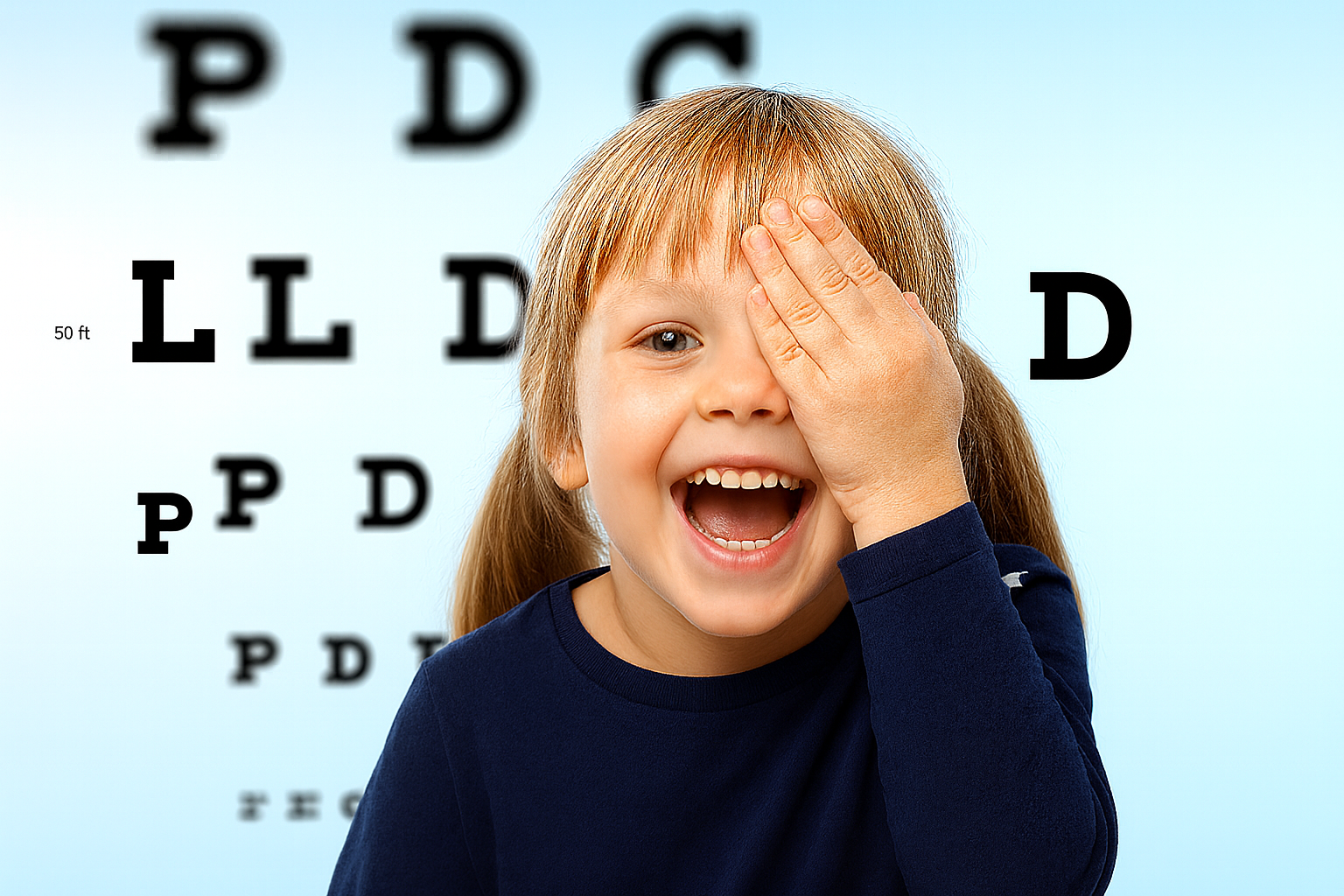Think “visual impairment” and you likely think – there’s something wrong with the eyes.
But sometimes, as with CVI, the eyes are perfectly healthy, and the challenge is in the brain.
What is CVI (cortical visual impairment)?
Over the past decade, CVI has emerged as the leading cause of childhood visual impairment. It’s a neurological condition in which the breakdown is in how the brain processes information transmitted by the eyes.
This differs from ocular visual impairments, in which vision loss is from structural problems in the eye. Because the eyes are typically healthy in those who have CVI, it is harder to diagnose. Eye exams are completely normal, but the child still struggles to see because the brain cannot correctly interpret the visual signals it receives.
Because eye exams often look normal, and many eye doctors aren’t familiar with CVI, it’s frequently missed or misdiagnosed as autism, learning disabilities, or ADD. Accurate and timely diagnosis is crucial because it enables the child’s support team to begin interventions and improve visual functioning sooner – yielding faster progress.
What causes CVI?
CVI is caused by brain injuries such as lack of oxygen at birth, infant stroke, or conditions like PVL (a type of white matter injury often seen in premature babies). Because many of these complications develop due to premature birth, CVI is often associated with preemies.
How does CVI present?
Problems are often first noticed by a parent or professional when the child seems to struggle with vision.
The child may have unusual vision-related behaviors, like tilting their head in a specific way to look at things, staring at lights, or not visually processing objects around them. This was the case for Raizy Sander, who shared her daughter’s story with Hamaspik. The child’s OT noticed that she couldn’t focus on her toys and recognized it as a sign of CVI.
How is CVI diagnosed?
There’s no single scan or lab test that proves CVI. At most, an MRI will show brain damage that indicates risk for CVI, but diagnosis is based upon assessment of behavior. To diagnose CVI, professionals will look for three criteria:
- a history of brain injury,
- a medical eye exam showing healthy eyes, and
- behaviors typical of CVI.
Behaviors shared by kids with CVI include preferring bright colors, being drawn to movement, or struggling in visually busy environments. Experts have identified ten hallmark behaviors, each explored in-depth in our article, Recognizing CVI: Ten Characteristics.
When the three criteria point to CVI, professionals confirm the diagnosis with two assessments. First, a clinical exam by a specialist familiar with CVI confirms that there are no ocular conditions, or, if there are, they do not explain the specific symptoms being displayed by the child. Then, a teacher of the visually impaired performs a functional vision assessment, determining the level of visual functioning, which informs the customized treatment plan.
The phases of CVI
Dr. Christine Roman-Lantzy developed the CVI Range, a commonly used assessment protocol. She also developed the framework for categorizing CVI, breaking it down into three phases: Phase I is the most severe and Phase III the mildest.
Identifying a child’s phase is essential, since it guides which interventions will help most, and these vary greatly from one phase to another. Then, the assessment can be used regularly to monitor progress over time.
Interventions
With the right support, a child’s vision can improve over time.
There is no medical cure for CVI, but because it begins in the brain – not the eyes – it is highly treatable. The brain can learn to process what the eyes see.
However, treatment can’t happen in isolation. Progress comes when everyone on the team – parents, teachers, and therapists – works together to weave vision practice into the child’s daily routines, giving them regular, meaningful opportunities to use their vision through carefully adapted visual experiences.
CVI interventions help children develop visual processing abilities by having them practice using their sight. Depending on the severity of the child’s CVI, professionals and family members will use varying degrees of adaptations such as light or bright objects, or reduced complexity, to help the child use their sight.
For example, when a child has lower levels of functional vision (Phase I), a therapist might use neon or brightly colored light-up toys in a dim, quiet room to stimulate their vision and train their brain to process visual input.
As the child makes progress in their vision (to Phase II), interventions involve incorporating light, color, movement, and reduced clutter (complexity) into their daily routines. This can include giving the child brightly colored functional objects, like a red spoon, or a bright yellow towel for drying hands. To learn more about the phases of CVI, and relevant adaptations for each one, read Recognizing CVI: Ten Characteristics here.
Individuals with CVI can make tremendous progress to the point that their vision condition will be barely, if at all, noticeable to others (Phase III). A child in Phase III will mainly struggle with very visually complex situations and need some degree of educational or therapeutic interventions, such as blocking out an extremely busy portion of a worksheet or using a pointer to anchor the child’s attention to a target on a busy display such as a classroom board.
Parents are encouraged to have high expectations of their children with CVI because with the right support, particularly when interventions are started young, there’s tremendous potential for progress. While progress may happen at a slower pace in older kids or those with additional developmental challenges, it’s still important to believe in your child’s ability to grow. The timeline may be longer, but the potential is just as real.
Because with CVI, vision isn’t lost. It can be taught, and children can finally see more than just the light.


















.png)




.png)













